Cricket’s mammoth Indian Premier League
Oct 3, 2024
The sport’s first franchise league is a huge money spinner and has overshadowed other domestic competitions in the game
The months of April and May mean only one thing for India’s army of cricket fans; the Indian Premier League (IPL). Now in its 17th season, the IPL was cricket’s first franchise style league.
A franchise sports league is a tournament where teams are run like a business and can be privately owned. Leagues like soccer’s Premier League in England and basketball’s National Basketball Association in the United States are domestic tournaments. Across all major sports played in the world, including soccer, American football, baseball and basketball, franchise-style leagues have been almost as popular as international events.
Not in cricket though.
The sport is primarily played at international level among a handful of countries, most of them former colonies of Britain. The international governing body of cricket, the International Cricket Council (ICC), has 12 permanent members. It also has over 90 associate member nations where the game is in various stages of development and popularity.
While still a relatively small sport, cricket is followed by over a billion people, the vast majority of them in south Asia. Fans in India account for over 80% of cricket’s following globally.
Cricket is played in over a 100 countries
The international governing body of cricket, the International Cricket Council, has 12 full members and over 90 associate members.
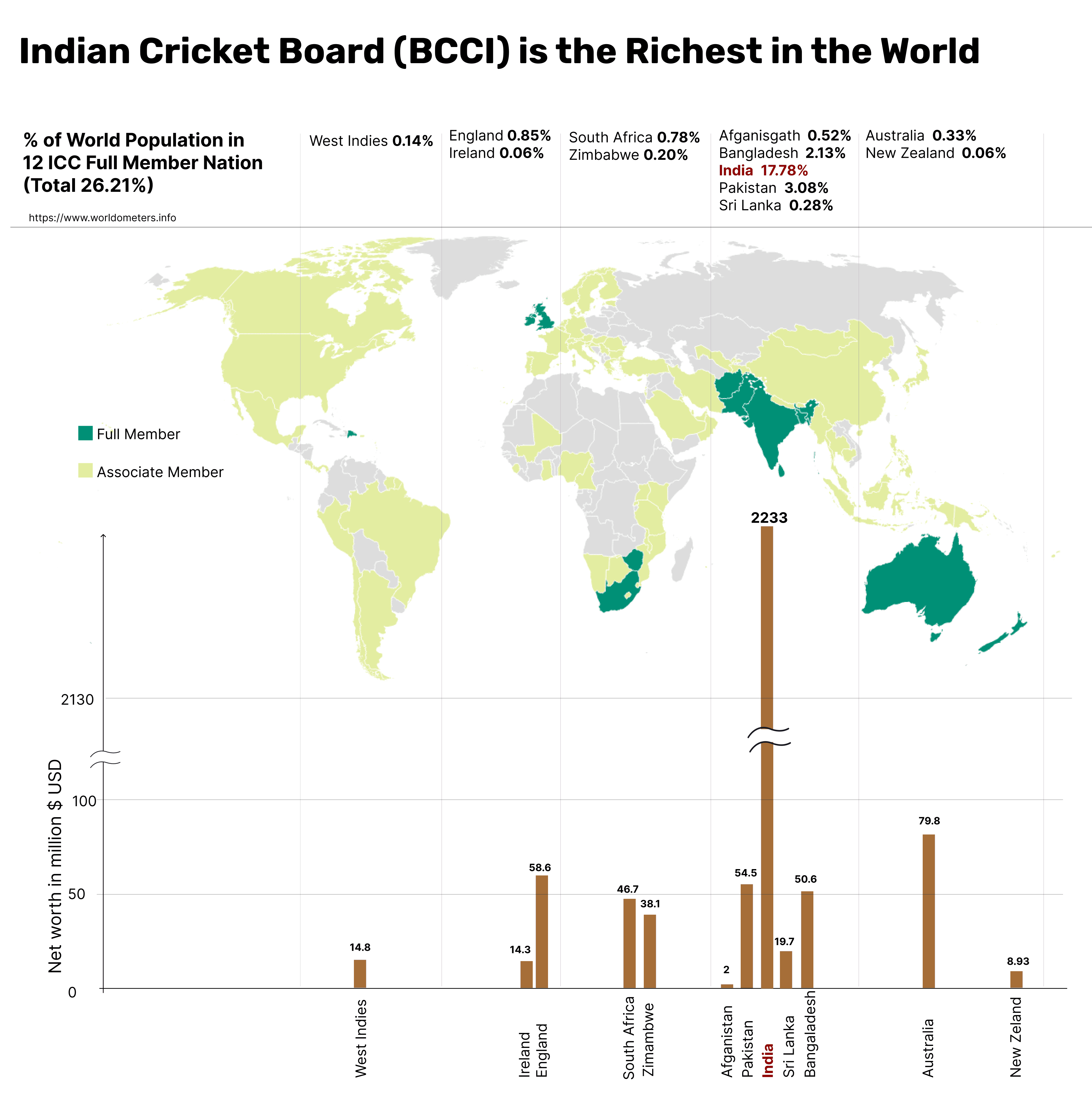
With such massive popularity in India, it is not hard to understand that the sport is financially lucrative in the country. The Board of Control for Cricket in India (BCCI) wields the most influence in the sport. According to the ICC’s revenue model finalised in 2023, the BCCI will take home nearly 40% of the ICC’s annual net earnings from 2024 to 2027. All other boards receive a share less than 10%.
The BCCI’s earnings have also been substantially higher than the rest. Its profits for the company’s financial year ended March 2022, the latest year for which filings are available, were the highest at $103.4 million. In comparison, the England and Wales Cricket Board recorded a profit of $15.8 million in the February 2022 to January 2023 period, a distant second.
How it all started
The BCCI announced the Indian Premier League in 2007 around the time the inaugural edition of the Twenty20 (T20) Cricket World Cup was taking place. T20 was the newest format of the game, fast paced and played over three hours as opposed to the other two formats which take a whole day or five days.
The first season was played in the Indian summer in 2008 over 44 days featuring eight Indian city-based franchises owned by some of the country’s richest business groups. The current season features 10 teams and the duration has increased to 65 days.
The rise of the league is also mirrored by its valuation. A Brand Finance report states the brand valuation of the league has risen from $2 billion in 2009 to $10.7 billion in 2023. “This significant achievement is attributed to factors including a media rights deal amounting to a staggering $6.2 billion, an increase in the central pool of IPL revenues, the addition of two franchise teams, and the return to full stadium attendance in 2023 following the pandemic,” the report said.
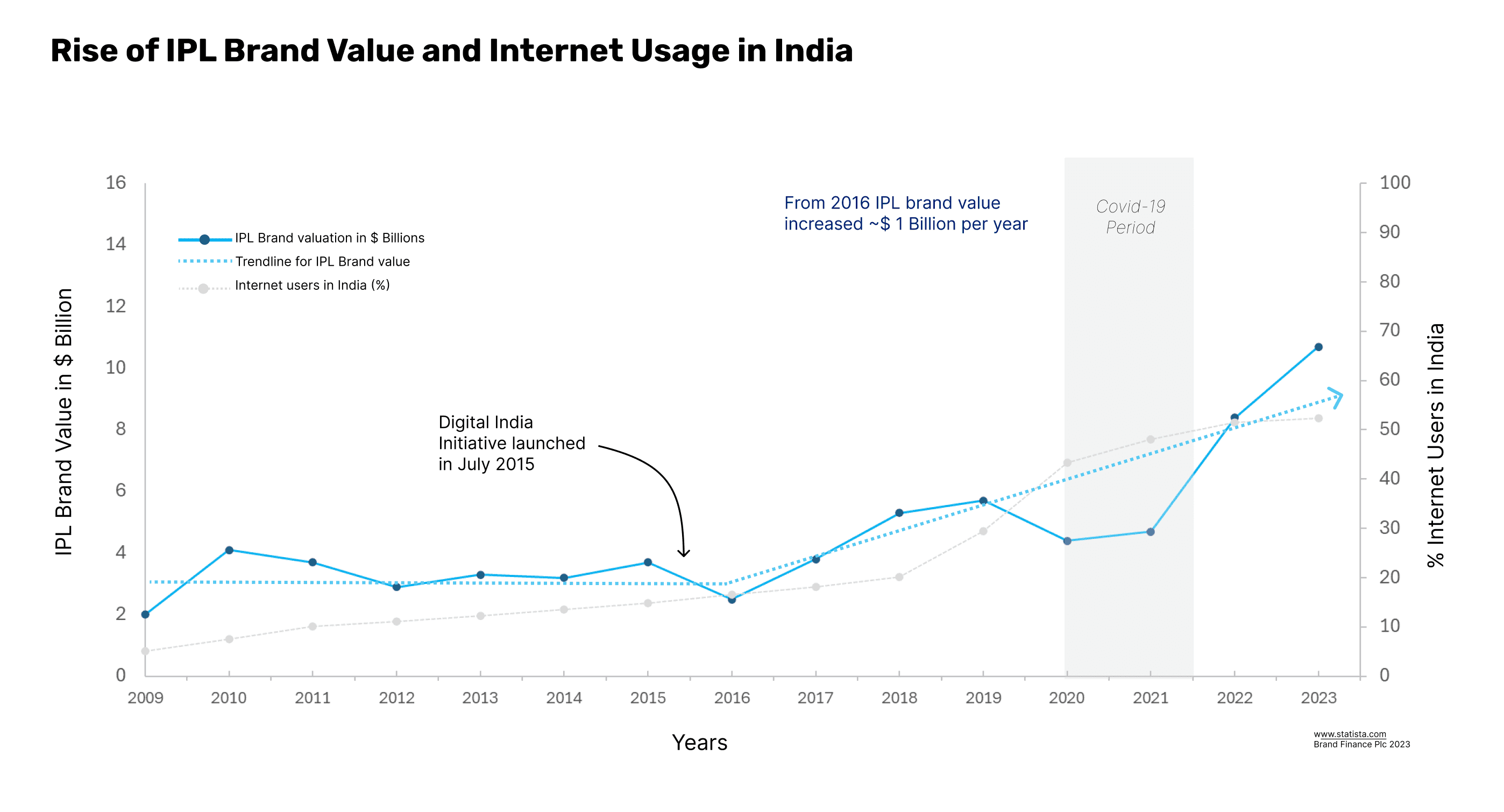
The Indian Premier League’s brand value touched $10.7 billion in 2023.
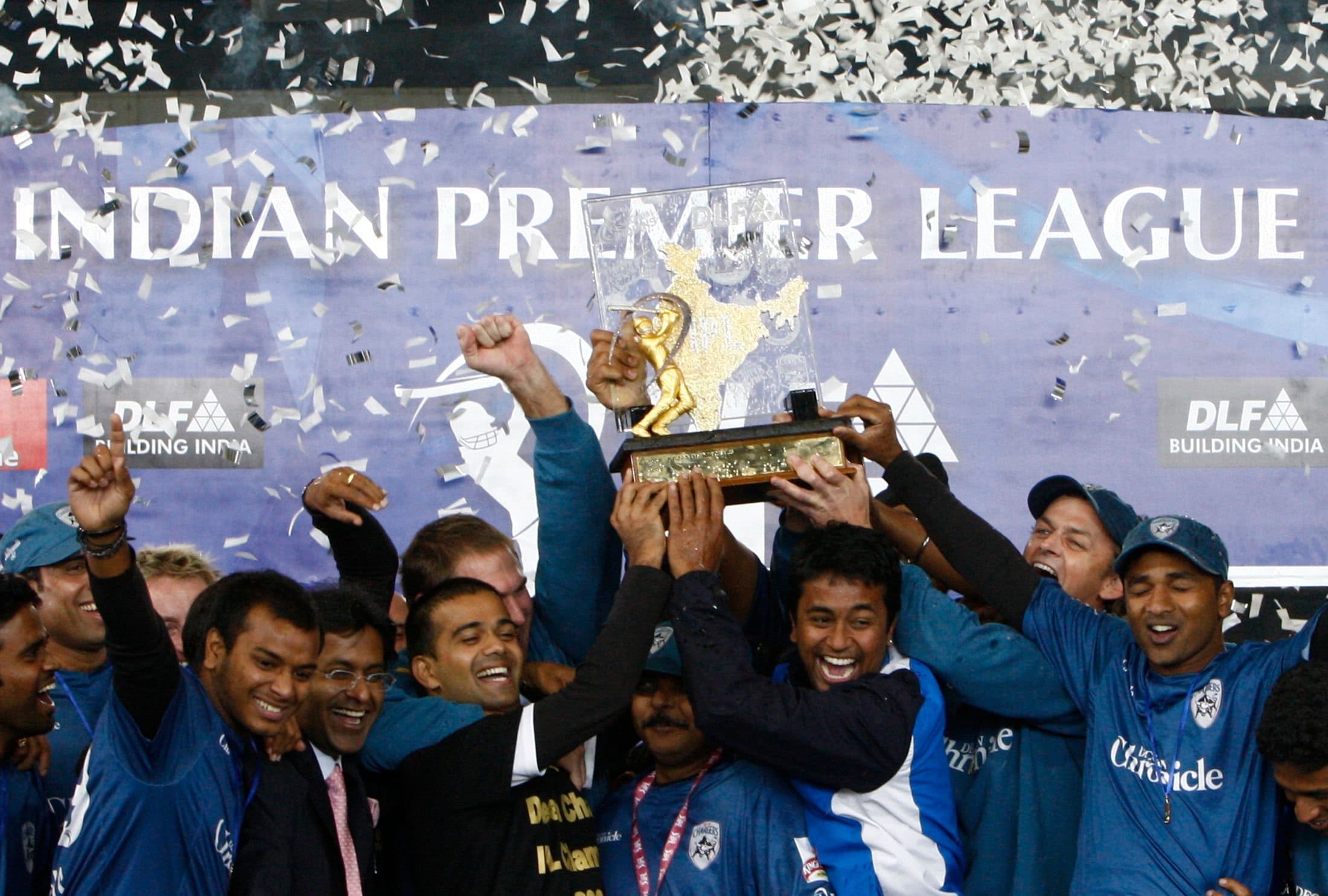
Deccan Chargers, the former Hyderabad-based franchise, lifting the IPL trophy in 2009. REUTERS/Mike Hutchings
How does it compare to other franchise leagues
Considering the number of matches played in a season, the IPL is smaller compared to other leagues such as the National Hockey League and the National Football League both in the US, and various football leagues in Europe. Its latest season features 74 games over a period of two months. In comparison, the others are played over at least a six-month period and have significantly more games.
Matches in an IPL season are fewer compared to other leagues

Despite being smaller in size compared to other such leagues, the IPL’s media rights are comparable with the “big leagues”.
The broadcasting and streaming rights for the two-month long event were sold for $6.2 billion for the 2023-2027 period. On a per-match basis, it worked out to be $16.8 million, which is the second highest among major sports leagues, according to a Jefferies note.
While this figure may not be fully comparable to other leagues, since cricket has substantially more ad-inventory per match due to its format, broadcasting rights revenue typically grows over a period of time, Jefferies added.
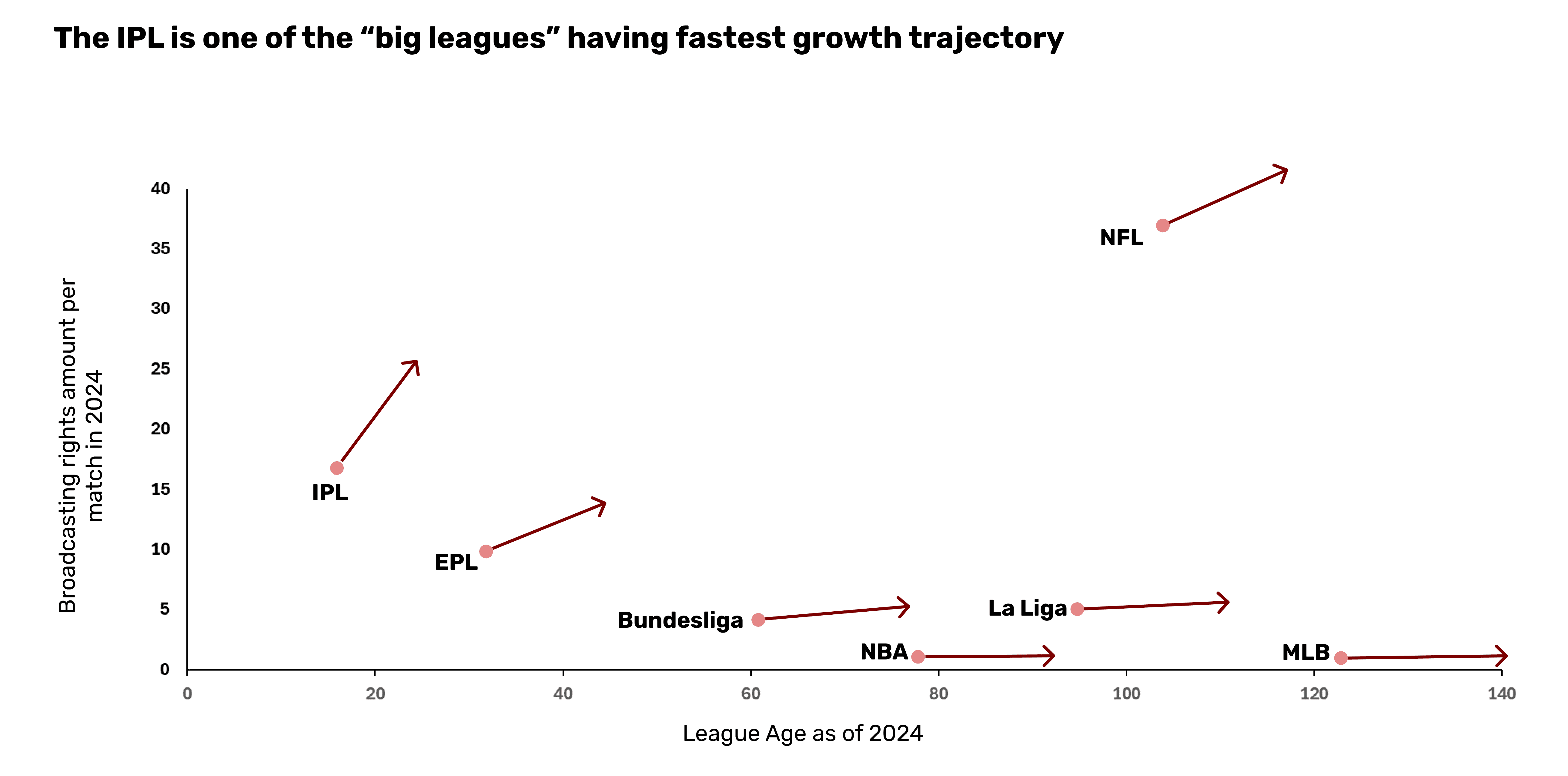
More franchise leagues in cricket
Following the IPL’s footsteps, most of the ICC’s full member nations established their own franchise T20 leagues. Interestingly, from 2023 such leagues were launched in the United Arab Emirates and the United States, two associate members of the ICC. The International League T20 and Major League Cricket have been started in a bid to increase the sport’s global footprint.Although these leagues are much shorter than the IPL, they have to jostle for space in cricket’s calendar. The Indian Premier League enjoys an exclusive window during the India summer from late-March to end-May.
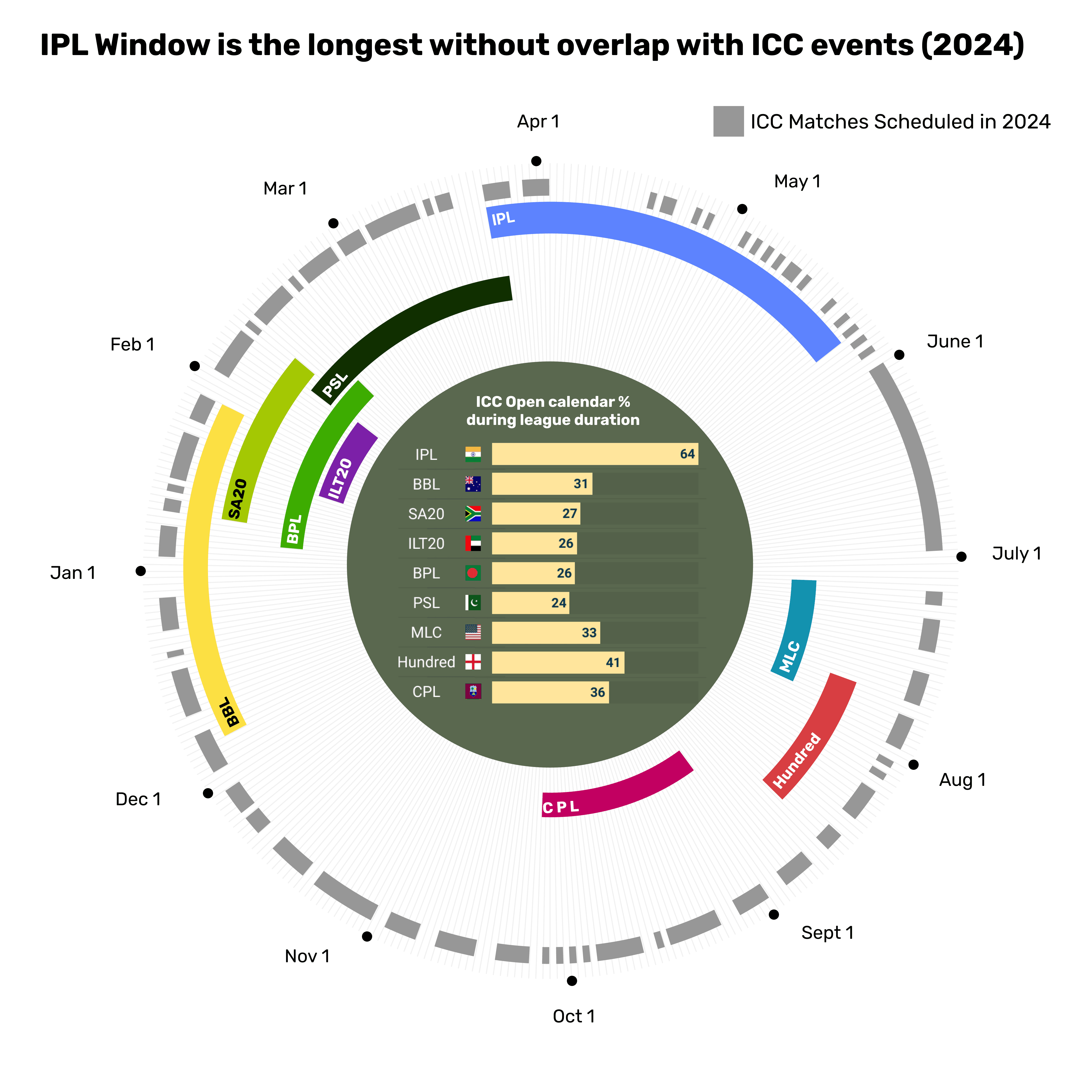
Not only does it have an exclusive window, but the IPL almost brings international cricket to a halt while it is taking place. In 2024, only a handful of international matches were played in April and May, involving Pakistan, Zimbabwe and Bangladesh who contribute few players to IPL teams.
The success of these franchise leagues and the rising popularity of women’s cricket have led to the growth of women’s editions of franchise T20 leagues. Australia was the first to create a women’s league parallel to the men’s Big Bash League. The Women’s Premier League in India was started only in 2023, 15 years after the IPL and is much smaller compared with the men’s tournament.
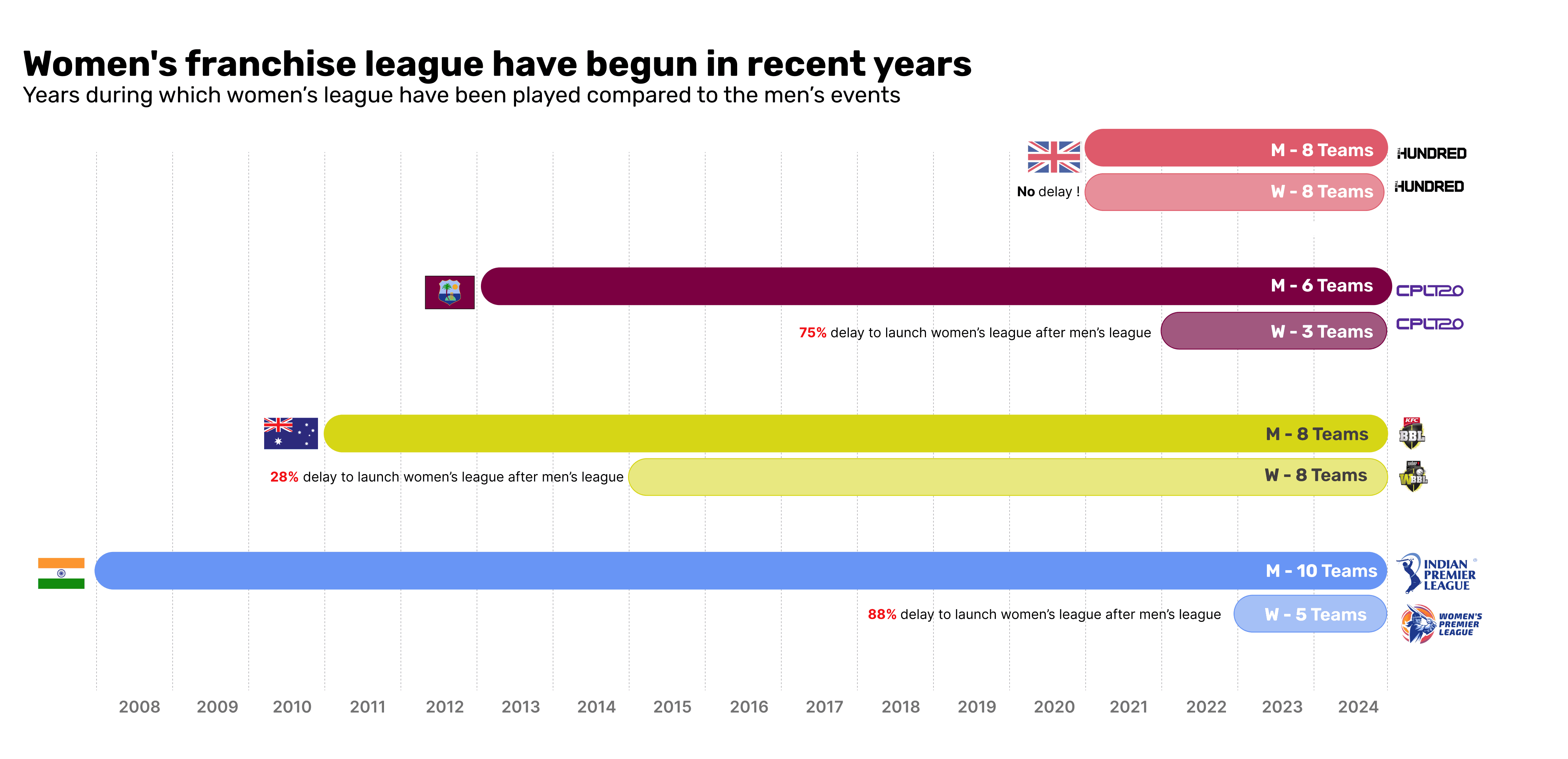
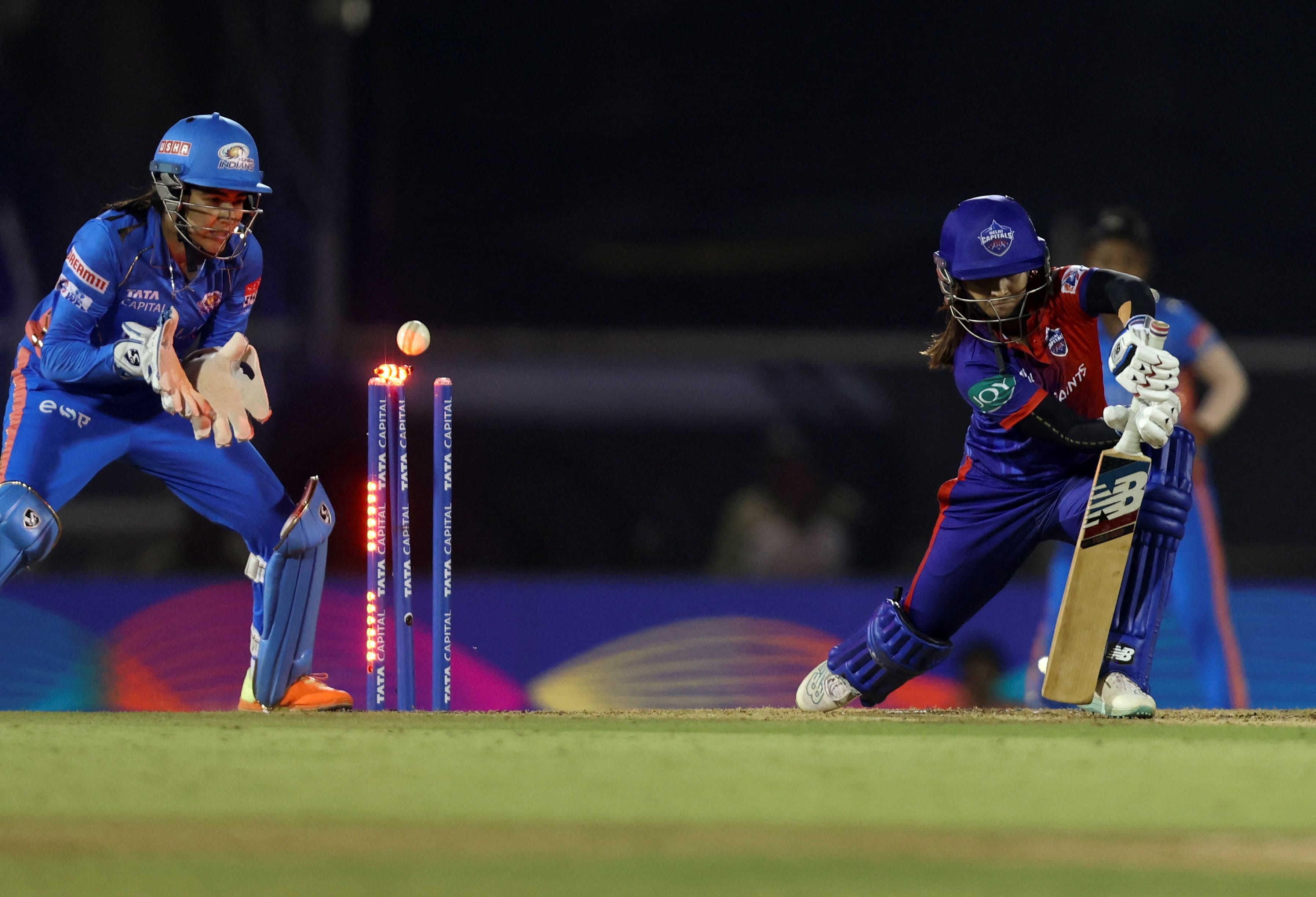
Delhi Capital’s Taniya Bhatia being bowled in the final of the 2023 WPL final. REUTERS/Niharika Kulkarni
IPL teams are almost everywhere
As franchise T20 cricket has grown, companies that have invested in the Indian Premier League have also bought stakes in teams in other leagues.
The SA20, South Africa’s franchise league, is one such example. After failing to run two domestic T20 leagues between 2018 and 2021, Cricket South Africa announced the SA20 in partnership with a former IPL executive in 2022. The tournament was launched in 2023 with six franchises, all of them wholly owned by business groups that have a stake in IPL teams.
Several franchises in the newly launched ILT20 in the UAE and Major League Cricket in the US have similar ownership to many teams in the IPL. Interestingly, IPL franchises have not expressed any interest in teams in the Bangladesh Premier League and the Pakistan Super League.
While Australia’s Big Bash League and England’s The Hundred do not permit any private ownership of teams, there has been recent speculation about a shift to privatisation. Franchise owners in the IPL and former officials have expressed open interest in being a part of these leagues, if they were to go private.
Investment of wealthy IPL franchises in certain leagues might disproportionately benefit them. This could likely make other leagues less attractive for players, thereby reducing fan interest. "It's getting a little bit dangerous the grip that it's (the IPL) having to monopolise that ownership and the ownership of the players and their talents and where they can and can't play," former Australian cricketer Adam Gilchrist said in 2022.
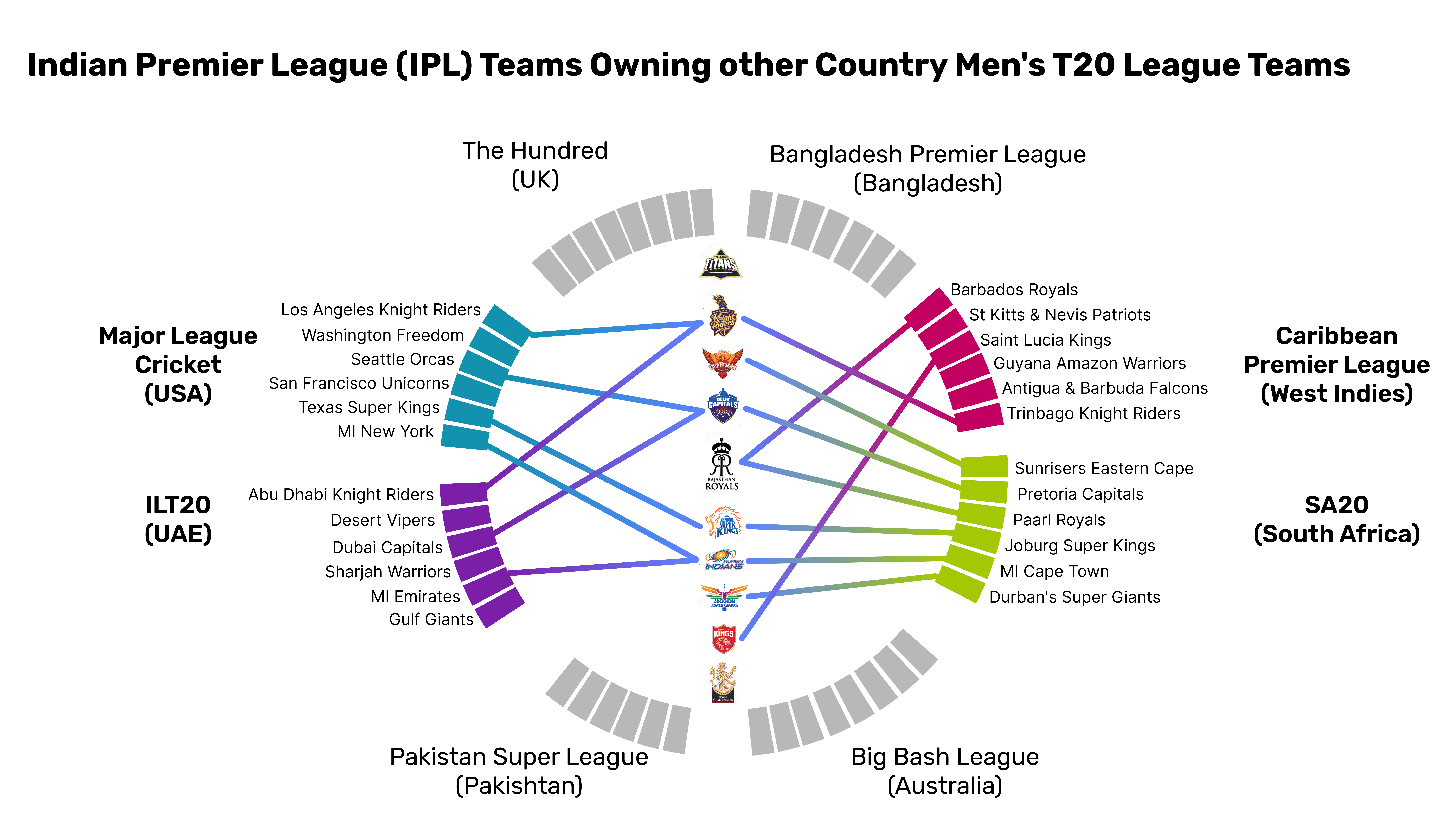
A shift has started?
There have been instances in which players have preferred to play in these franchise leagues ahead of their own national teams. The Big Bash League 2023-24 season was one such instance where several star overseas players opted to play in the ILT20 in the UAE over the finals. South Africa’s national cricket board sent a second-string team to play New Zealand this year as their leading players were involved in the SA20.
It remains to be seen whether franchise cricket will eventually take over international cricket as has been suggested. But the massive influence of one board and one domestic tournament may not be ideal for a sport seeking greater global appeal.
—————————————————-
Original story link: https://www.reuters.com/graphics/CRICKET-IPL/klvynexrypg/
Note1: Currency conversions to USD in the chart titled “India’s cricket board is the richest in the world” is based on current exchange rates.
Note2: This is part of DE705 Course assignment.
Note3: Tools used - Flourish Studio, Datawrapper , MS Excel, Figma